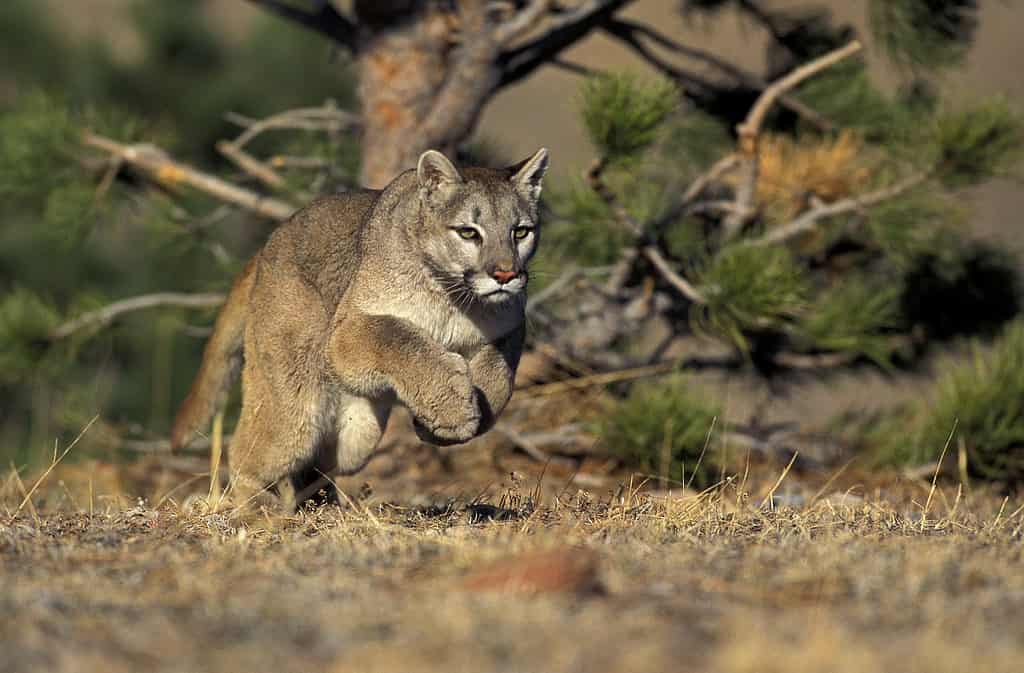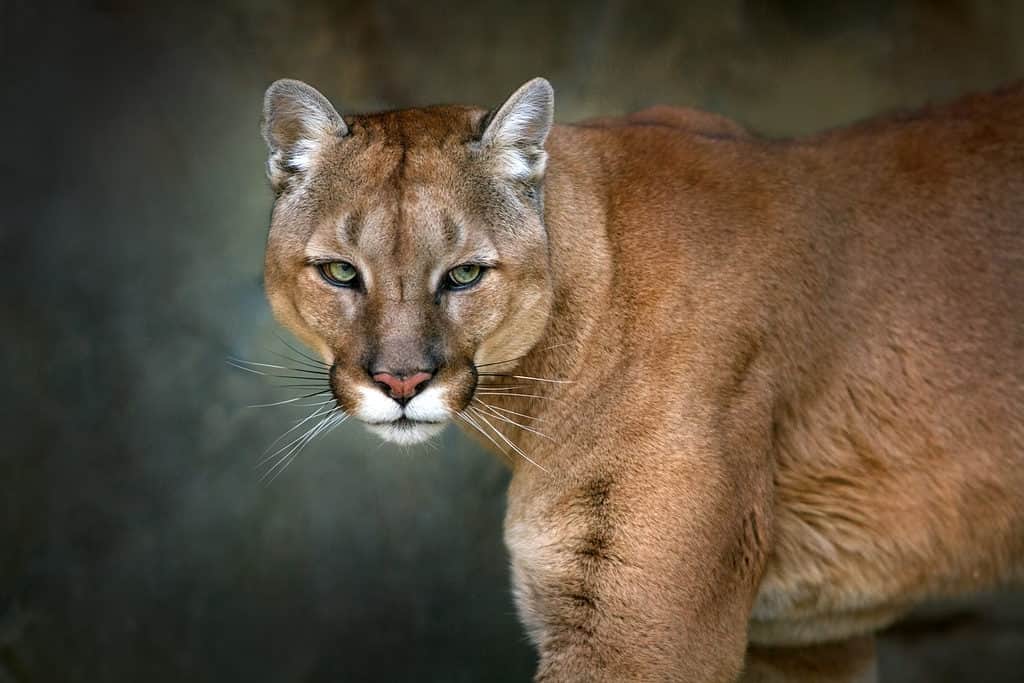Mountain lions once roamed practically all of the continental United States. That changed in the 19th and early 20th centuries. The United States economy was changing with the industrial revolution, but much of the country was still largely agrarian. Farmers viewed mountain lions as a direct threat to their livestock, and the cat was hunted to the brink of extinction in the eastern U.S. Today, the mountain lion’s territory in the western U.S. is largely stable. The majority of the cat’s U.S. range is limited to 15 states, but a 16th could be added to that list in the future: Missouri.

Could Missouri be welcoming mountain lions back? Recent
lion
activity suggests the answer might be yes.
©marekuliasz/Shutterstock.com
Missouri Mountain Lions
Mountain lions (also known as pumas, cougars, mountain screamers, and catamounts) are a rare sighting in Missouri. These cats were essentially eliminated in the state by 1927, but there are still occasional sightings today. The Missouri Department of Conservation generally reports 5-10 documented sightings of the cat each year, but 2023 may see that number go significantly higher.
There have already been four documented mountain lion sightings in the state this year. The most recent encounter was in late January when a vehicle in Franklin County hit a mountain lion just to the west of St. Louis. Officials confirmed the struck animal was a mountain lion, but the cat ran away from the scene and was never found.
Earlier this year, a video of a mountain lion was captured on a Boone County trail camera in central Missouri. The striking video has received tens of thousands of views on YouTube.
Mountain lions are territorial animals. When a male cat matures, it is forced to find its own territory. As the cat population grows, more toms are venturing out and claiming new territory. Mountain lions can travel more than 800 miles from their original lands. The recent sightings in Missouri indicate that these cats may be moving eastward, back into states where the species had been previously extirpated.

Mountain lions could be posed for a Missouri comeback.
©iStock.com/slowmotiongli
Additional States
Missouri is not alone in these encounters. The state is bordered to the north by Iowa. In early February 2023, two hunters killed an adult mountain lion in Iowa’s Johnson County.
Deer are the primary prey for mountain lions, and states like Missouri and Iowa have burgeoning deer populations. So while the cats are still officially extirpated in these states, they may be starting to reclaim a bit more of their native territory.
Missouri’s Big Cat Comeback?
Nathan Bowerstock is a large mammal biologist with the Missouri Conservation Department. In a recent interview, he said, “It’s an exciting time to be here in Missouri. Seeing [these mountain lions] shows that conditions may be right for the cats to reestablish themselves on their own.”
The department asks residents to report any potential sightings as soon as possible. With more documentation, the department can better prepare for if/when these big cats actually do reestablish an active breeding population in Missouri.

Missourians are asked to report any mountain lion sightings to the conservation department.
©Kwadrat/Shutterstock.com
The photo featured at the top of this post is © Evgeniyqw/Shutterstock.com
Thank you for reading! Have some feedback for us? Contact the AZ Animals editorial team.







